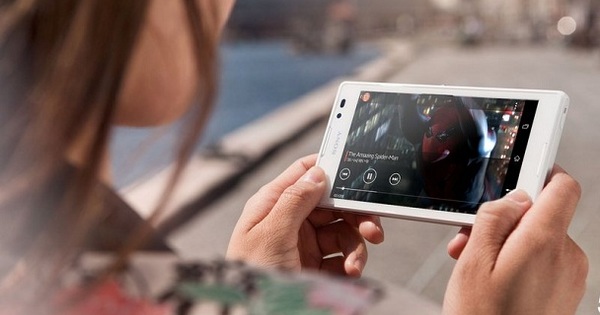You do not necessarily have to install all software on your computer. With tools that do not require installation (so-called portable apps), you only need a USB stick or some cloud storage and you can use programs without them being installed first. When you are done, simply close the program again. Which programs are suitable for this? What are the options and what are the limitations?
Tip 01: For whom
Portable apps have several advantages. The main feature is that you don't need to install the software. This keeps your computer clean and tidy. If a program is no longer needed, you also avoid having to uninstall it and pollute Windows. Portable apps also lend themselves well to situations where you temporarily use a computer (for example, at work or someone else's) and would rather not install the program or even be able to install it. In short: more than enough benefits to get started with it seriously!

Tip 02: Without installation
More and more software makers are offering a portable version in addition to the traditional version of their software. If you are looking for this, check the download page of the relevant software to see if such a variant is offered. You can often recognize these versions by terms such as 'portable edition', 'stand-alone version' and 'no installation needed'.
Only official versions
If there is no portable version of your favorite program available, don't be tempted to install an unofficial version of the program in portable form. You may be violating the developers' terms and conditions and run the risk of undetected installing malicious, 'modified' software. In short: only download from the official sources.
Tip 03: Special menu
The makers of PortableApps have developed a program that allows you to compile your own selection of portable programs and take them with you at all times. You can use the software for free: satisfied users are asked to make a small donation as compensation. Download the latest version. Then you walk through the steps of the wizard. click on Next one and then agree to the license terms. PortableApps asks how you want to install the program: choose New installation and confirm with Next one. In the next screen you choose where to install the program. We choose to install the program in the cloud, in one of our cloud folders. Choose cloud. The advantage of this is that we always have access to our installation, as long as we have an internet connection. In the next screen, the wizard indicates in which cloud folder can be installed.
 PortableApps lets you make your own selection of favorite apps
PortableApps lets you make your own selection of favorite apps Tip 04: Installation options
Would you rather use the programs from a USB stick? Then choose Portable. Indicate on which USB stick the program may be installed. You can also choose to install PortableApps on the local computer. Then choose Local or for Local all users.
Tip 05: Get started
The first time you open the program, the software will retrieve a list of available programs. This may take a while. The programs are arranged by category. For example, there are the categories Images & Photos, Utilities, and Spell. Go through the list and select the tools you are interested in. Are you satisfied with the selection? click on Next one. The programs are then downloaded, extracted and added to the PortableApps selection. You open PortableApps via the icon in the notification area of the Windows taskbar. The program has the appearance of the start menu of an older Windows version. On the left you will find the programs. Click on an app to open it.
You can install new apps at any time later. Open PortableApps and choose Apps, Get more apps. Then indicate how you want to select the apps. Choose between By Category, By Title, New Releases and Recently updated.

Tip 06: Extra settings
The PortableApps options window gives you access to interesting additional settings. In the main PortableApps window, click Options. If you also want access to beta versions, open the tab App Store. Place a check next to the option View Advanced Apps (Beta/Test). Also on the tab Advanced you have access to meaningful functions. Here's how to disable unnecessary app welcome windows (Disable app splash screens) and automatically close apps when you exit PortableApps (Close Apps When Exiting Platform). Through the tab Themes customize the appearance of PortableApps. To change the interface language of the platform, choose the desired language on the tab General.

Tip 07: Convenient backup
Have you built up a collection of portable apps with great care and attention? Back up your programs. This way you can always easily return to a backup, for example if you use PortableApps on another computer. click on backup and then Backup. click on Next one and specify what you want to back up. Choose Complete. In the box Backup Options below it choose the backup location. Finally click on the button backup. To restore a backup in the future, in the program window, choose Backup / Restore Backup.
Tip 08: Always up to date
Of course, portable apps are also regularly updated to a new version. Every time you start PortableApps, the program checks for the presence of new versions. You can also manually check for new versions. Choose Apps / Check for updates.
If you do not want the software to automatically check for new versions, for example because you want to keep control over this yourself, you can disable the automatic update function. Choose Options and click on the tab updater. Uncheck the option When starting up the platform and click OK.
Tip 09: Secret options
When you right-click on an app in the PortableApps menu, you have access to additional options. An important one of these is Run as administrator: Some apps require higher permissions to run and this option will come in handy. If you have an app that you use often, choose the option Favorite: the app will then continuously appear at the top of the menu. You can make the favorites stand out even more after this. Choose Options and open the tab General, put a check on the option Show favorites in bold. The same option is also available for the indication of the different categories. On the same tab, choose the option Show categories in bold.

Tip 10: Create categories
By default, PortableApps creates its own categories. You may prefer to create a different layout. Right click on the app you want to add to its own category and choose Category / Add Category. Enter a name in the new window and confirm by clicking OK. Incidentally, you do not have to settle for the default names of the apps: you can give each app a name of your choice or expand the existing app with an extra title. Right click on the app and choose Renaming.
Tip 11: Hide or delete
Some programs you may not use that often. To ensure a tidy appearance, you can hide these apps. They will then no longer be shown in the list, but can still be used. Right click on the relevant app and choose Hide. The app is no longer visible. To still use it, right-click on any app to bring up the menu, after which you choose Show hidden icons. The hidden apps reappear and are identified by a solid line through the app name.
Do you need even more overview? From the main menu of PortableApps choose Options and go to the tab Organization. Here you determine how the menu is arranged. For example, you can show favorites and recent apps on the first screen and group the apps by category in the second screen. It is also possible to list all apps alphabetically.
If you notice after a while that you no longer use a certain app, it is time to remove it. You do this via the PortableApps menu. Find the app in the list and right click on it. Choose now Uninstall (sic).
 The context menu gives you access to all kinds of extra options
The context menu gives you access to all kinds of extra options Tip 12: Safe disconnection
If you use portable apps via your USB stick, make sure that you always log the USB stick out of Windows before you remove it from the USB port. Right-click on the USB stick icon (in the Windows system tray) and choose Eject External Drive. The exact name of this option depends on the name of the USB stick connected to the computer. Only after the message has appeared, do you remove the USB stick from the port. This prevents the contents of the stick (and therefore your portable apps) from being damaged. Can't disconnect the USB stick successfully? Then the stick is still in use by a program. Check if you have closed all portable apps. You also check that you have not opened any files (such as documents) in another program.

